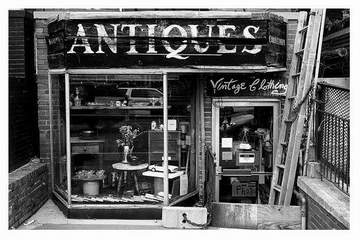Recently I have been going through a closet of mine and ran
across this lovely carving which is said to be part of the 1963
"Cleopatra" movie set. With neither the patience to sit through the
movie nor a mark, I purchased the piece based on its artistic merits. I was
wondering if someone could verify that it was used in the movie and provide me
a film still to verify.
Cleopatra chronicles the struggles of
Cleopatra VII, the young Queen of Egypt, to resist the imperialist ambitions of
Rome.
Despite being a critical
failure, it won four Academy Awards. It was the highest grossing film of 1963,
earning US $26 million ($57.7 million total), yet made a loss due to its cost
of $44 million, the only film ever to be the highest grossing film of the year
yet to run at a loss.
The film is infamous for nearly
bankrupting 20th Century Fox. Originally budgeted at $2 million, the budget eventually totaled up to $44 million — the
equivalent of $320 million in 2010 dollars (see the List of most expensive
films to produce), making the movie the third-most costly ever produced
worldwide and the second most expensive in the United States after Pirates
of the Caribbean: At World's End, which had a budget of US$300 million
(accounting for inflation in each case). This was partly due to the fact that
the film's elaborate, complicated sets, costumes and props had to be
constructed twice, once during a botched shoot in London and once more when the
production relocated to Rome.
Filming began in London in 1960.
Mankiewicz was brought into the production after the departure of the first
director, Rouben Mamoulian; in the early stages of the project, before the
casting of Elizabeth Taylor, Mamoulian is said to have favored African-American
actress Dorothy Dandridge for the lead role. Mankiewicz inherited a film which
was already $5 million over budget and had no usable footage to show for it.
This was in part because the actors originally hired to play Julius Caesar
(Peter Finch) and Mark Antony (Stephen Boyd) left due to other commitments.
Mankiewicz was later fired during the editing phase, only to be rehired when no
one else could piece the film together.
Elizabeth Taylor was awarded a
record-setting contract of $1 million. This amount eventually swelled to $7
million due to the delays of the production, equivalent to over $47 million
today. Taylor became very ill during the early filming and was rushed to an
emergency room where a tracheotomy had to be performed to save her life. The
resulting scar can be seen in some shots. All of this resulted in the film
being shut down. The production was moved to Rome after six months as the
English weather proved detrimental to her recovery, as well as being
responsible for the constant deterioration of the costly sets and exotic plants
required for the production. (The English sets were utilised for the spoof Carry
On Cleo.) During filming, Taylor met Richard Burton and the two began a
very public affair, which made headlines worldwide. Moral outrage over the
scandal brought bad publicity to an already troubled production.
The cut of the film which
Mankiewicz screened for the studio was six hours long. This was cut to four
hours for its initial premiere, but the studio demanded (over the objections of
Mankiewicz) that the film be cut once more, this time to just barely over three
hours to allow theaters to increase the number of showings per day. As a
result, certain details are left out of the film, such as Rufio's death and the
recurring theme of Cleopatra's interaction with the gods of Egypt. Mankiewicz
unsuccessfully attempted to convince the studio to split the film in two in
order to preserve the original cut. These were to be released separately as Caesar
and Cleopatra followed by Antony and Cleopatra. The studio wanted to
capitalize on the publicity that the intense press coverage the Taylor-Burton
romance was generating, and felt that pushing Antony and Cleopatra to a
later release date was too risky. The film has been released to home video
formats in its 243-minute premiere version, and efforts are under way to locate
the missing footage (some of which has been recovered).
Any help identifying the provenance of this piece would be greatly appreciated.







